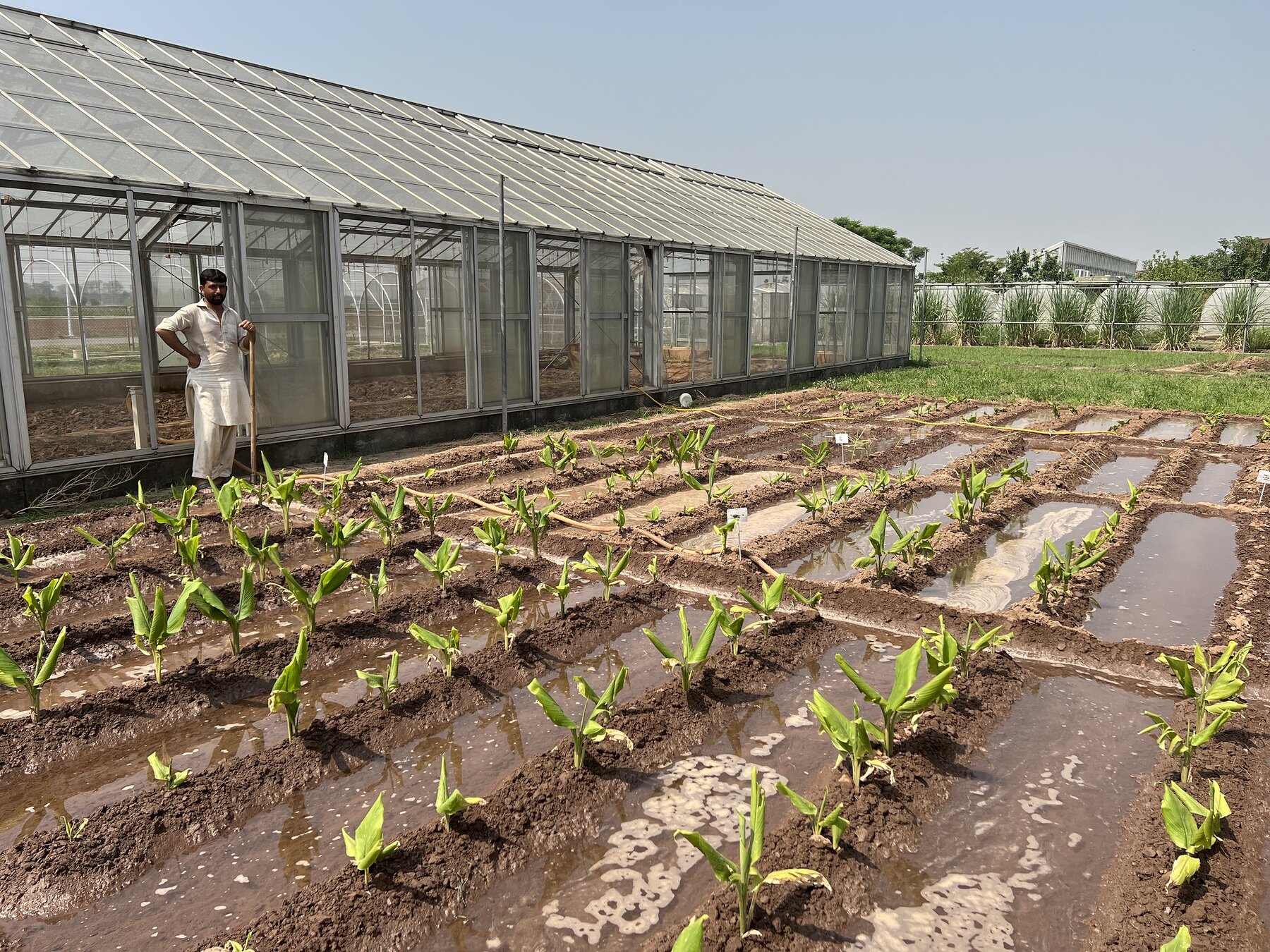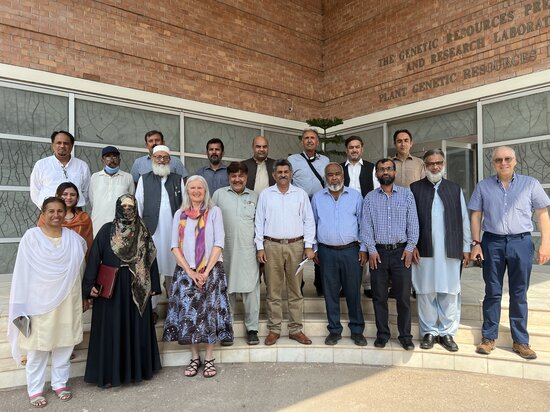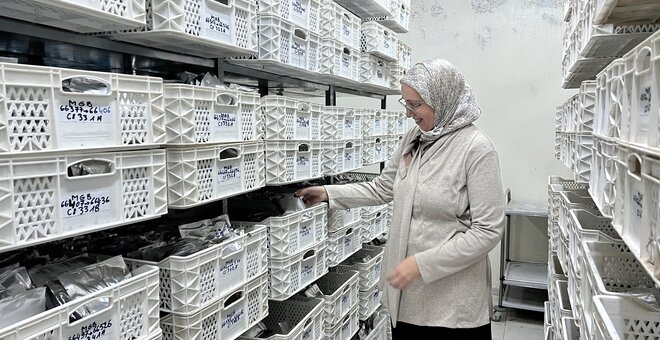Pakistan: National Genebank
Location
Islamabad, Pakistan
Parent Organization
Plant Genetic Resources Institute, Pakistan Agricultural Research Council, National Agricultural Research Centre
Mission
- Explore and collect biodiversity from diverse ecologies
- Serve as the national facility for conservation and distribution of genetic resources to researchers
- Characterize and evaluate germplasm for improving agricultural productivity to ensure food security.
- Document/disseminate information on genetic resources.
- Generate knowledge and create awareness about biodiversity.
- According to Plant Breeders’ Rights Act (2016), Genebank will conserve germplasm/varieties, presented for protection at Plant Breeders’ Rights Registry.
- Serve as the national focal point for the International Treaty on Plant Genetic Resources for Food and Agriculture.
Date Established
1993
Number of Samples Conserved
42,659 (as at June 2023)
Main Crops Conserved
- Cereals, including wheat, rice, barley, millets, maize, oat, rye, buckwheat
- Grain legumes, including pigeonpea, chickpea, lentil, mash bean, mung bean, cowpea, faba bean, peas, Phaseolus sp., Lathyrus sp.
- Vegetables, including Brassica sp., carrot, cucurbits, okra, pea, radish, spinach, tomato, rocket
- Industrial crops, including soybean, safflower, linseed, sesame, sunflower, castor
- Fiber crops
- Fodder crops
- Medicinal and aromatic plants
- Fruit trees
- Forest trees
- Weeds and crop wild relatives.
Background
The Pakistan Agricultural Research Council (PARC) started the Plant Genetic Resources Programme in 1977, which established a small genebank at the National Agricultural Research Centre (NARC), Islamabad. The current Plant Genetic Resources Institute (PGRI) was established in 1993 through technical cooperation with the Japan International Cooperation Agency (JICA). PGRI consists of three programmes: the Plant Genetic Resources Programme; the National Herbarium Programme; and the National Medicinal, Aromatic Plants and Herbs Programme.
The Plant Genetic Resources Programme comprises seven units:
- National Genebank of Pakistan (NGP)
- Seed Preservation Laboratory
- In vitro Conservation Laboratory
- Germplasm Exploration Laboratory
- Germplasm Evaluation Laboratory
- Plant Introduction and Seed Health Laboratory
- Data Management Laboratory
The NGP collection is extensively used by plant breeders and researchers from NARC and other PARC institutes and universities both in Pakistan and abroad.
- The NGP distributes some 10,000 seed samples each year to plant breeders, researchers and other users in Pakistan and elsewhere.
- The NGP has conducted more than 140 germplasm collecting missions across Pakistan, collecting samples of major and minor crops and crop wild relatives.
- More than 150 PhD and 400 Masters studies have been conducted using germplasm from the genebank.
- PGRP scientists have published more than 300 peer reviewed journal articles in internationally recognized journals.
- The genebank has deposited nearly 5,000 seed samples in the Svalbard Global Seed Vault.
The Collection
The NGP collection comprises more than 42,000 seed samples, with a further 20 accessions conserved in vitro and 293 accessions of various crops in field genebanks, not all of which are under the NGP. About half of the collection is made up of local landraces, representing unique local diversity of many of the crops conserved.
Seeds are stored at 10° C for the active collection, 5° C for the base collection and −20° C for the original collection, which comprises some 6,000 seed samples.
Ten crops account for 55% of the seed samples: barley, Brassica, chickpea, cluster bean (Cyamopsis tetragonoloba), cotton, peas, rice, sorghum, Vigna and wheat. Each has more than 1,000 seed samples in the collection.
The National Genebank has also collected unique indigenous germplasm of different nuts and fruit collected from Pakistan's northern and western regions, including 109 accessions of almond (Amygdalus communis), 73 of walnut (Juglans regia), 298 of apricot (Prunus armeniaca), 82 of peach (Prunus persica), 40 of plum (Prunus domestica) and 37 of pear (Pyrus
communis).







